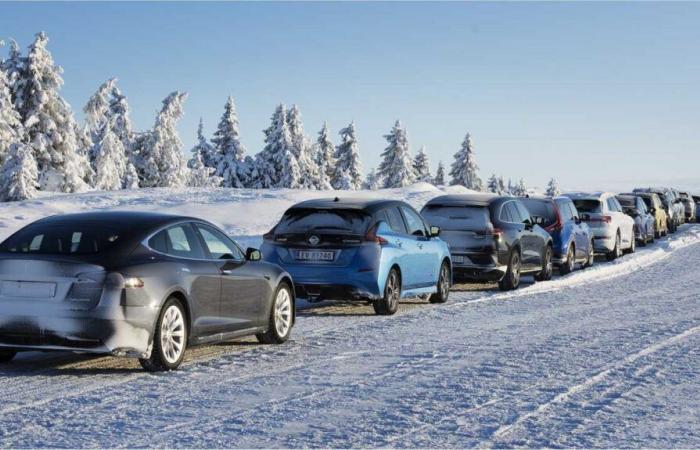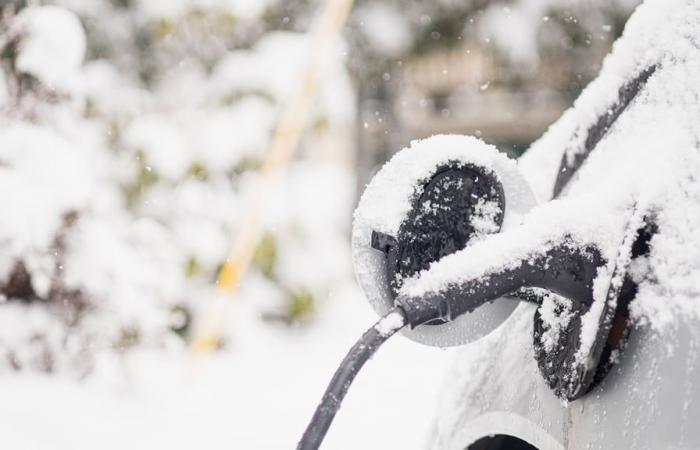Electric car news
Winter is fast approaching, and with it comes its share of challenges for electric vehicle drivers. The cold can in fact have a significant impact on the performance and range of your connected car. Don't panic! Here are some practical tips to get the most out of your electric car during the winter season.
Why does cold affect electric cars?
Before getting to the heart of the matter, it is important to understand why low temperatures influence the operation of your electric vehicle. The main culprit? The battery. When the mercury drops, ions flow more slowly through the battery cells, resulting in a drop in performance and autonomy. In addition, heating the passenger compartment, essential in winter, draws directly from the battery's energy reserves.
These factors combined can reduce the range of your electric car by 20 to 40% depending on the models and climatic conditions. Fortunately, there are solutions to limit this impact and take full advantage of your vehicle, even in cold weather.

Optimize parking for your electric car
The first tip, and not the least, concerns parking your vehicle. If you are lucky enough to have a garage, now is the perfect time to park your electric car there. The warmer temperature of an enclosed space will help your battery hold its charge longer and recharge faster.
When traveling, use covered parking whenever possible. Although the temperature difference may seem small, it will have a positive impact on your battery's performance. Don't hesitate to invest in a garden shed or a carport if you don't have a garage, this can make a real difference in the long term.
Preheat your electric vehicle before departure
Most modern electric cars offer a programmable preheating function. Use it! This feature helps warm up both the cabin and the battery before you leave, which is crucial to optimizing your vehicle's performance.
Ideally, plug in your car and turn on the heating system 20 to 30 minutes before hitting the road. This way, you will not draw on the battery charge for this preheating. This tip will not only allow you to leave in a comfortable vehicle, but also significantly improve the autonomy of your trip.
Manage your battery charge intelligently
In winter, it is essential to keep a close eye on the charge level of your battery. Avoid letting the charge drop too low, as the battery management system usually reserves 15 to 20% of capacity to heat the battery itself when it is very cold.
For optimal efficiency, aim for a charge range between 20 and 80%. This range helps preserve the longevity of your battery while guaranteeing sufficient autonomy. Also plan for more frequent recharges and allow yourself a safety margin of around 20% on the displayed autonomy.
Here is a summary table of good charging practices in winter:
| Charge level | Recommendation |
|---|---|
| 0-20% | Absolutely avoid |
| 20-80% | Ideal beach |
| 80-100% | Only for long journeys |
Optimize cabin heating
Heating the passenger compartment is one of the main consumers of energy in winter. To preserve your autonomy, adopt a targeted approach to heating. If you are traveling alone, concentrate the heating only on the driver's side. Better yet, use heated seats if your vehicle is equipped with them. They consume less energy than global heating of the passenger compartment and provide an immediate and pleasant feeling of warmth.
Don't hesitate to equip yourself with accessories such as a thermal blanket or heated gloves to further reduce your dependence on the vehicle's heating system. These small actions can make a big difference in your range, especially during long journeys.
Monitor your tire pressure
An often overlooked but crucial aspect for the range of your electric car in winter is tire pressure. The air inside the tires contracts when the temperature drops, causing the pressure to decrease. Underinflated tires increase rolling resistance, which results in increased energy consumption.
Check your tire pressure regularly, ideally once a week in winter. Maintain them at the pressure recommended by the manufacturer to ensure optimal energy efficiency. If you live in an area where snowfall is frequent, consider installing winter tires. They will provide better grip and, therefore, safer and more efficient driving.
- Check tire pressure once a week
- Maintain the pressure recommended by the manufacturer
- Opt for winter tires in snowy regions
Activate the eco mode of your electric car
Most electric cars come with an “eco mode” designed to maximize range. This mode limits the power supplied to the engine and heating systems, thereby reducing energy consumption. Certainly, the acceleration will be less brisk, but this can prove beneficial on snowy or icy roads.
Eco mode also often adjusts energy recovery when braking, which can be particularly useful in winter. However, if road conditions are really bad, do not hesitate to deactivate energy recovery to avoid any risk of unexpected loss of grip.
By adopting these habits, you will maximize the range of your electric car while maintaining your safety on winter roads. Remember that each electric vehicle has its own particularities, so be sure to consult the user manual or contact your dealer for advice specific to your model. With these tips in mind, you are ready to face winter behind the wheel of your electric car, with complete peace of mind and efficiency.
Written by Philippe Moureau
Forty-year-old passionate about electric cars. I am interested in the energy transition and the fight against greenhouse gas emissions. I am a true electric car enthusiast and environmental advocate.
React to the article








